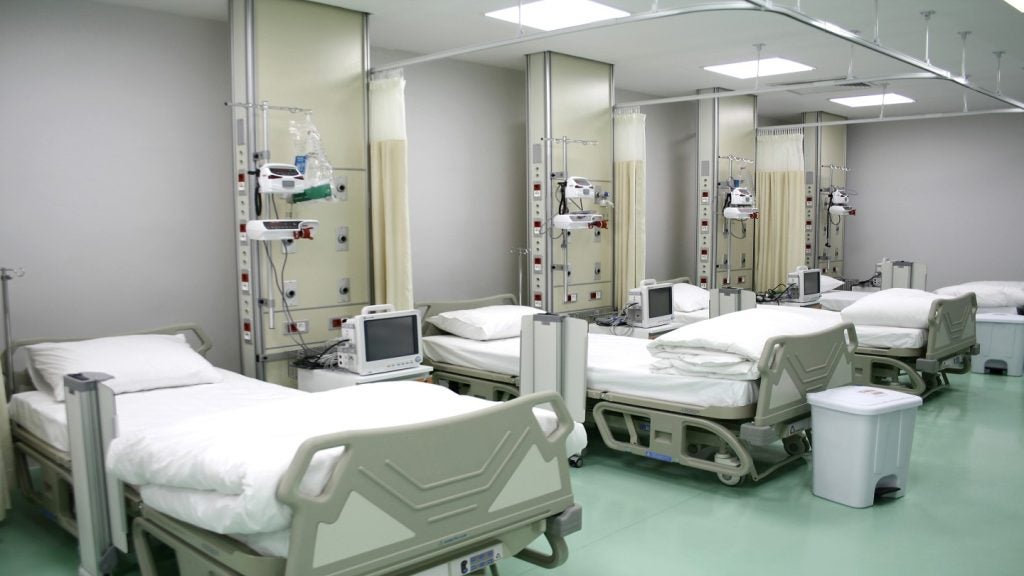
It has been 13 years since the since the UK’s Labour Party declared that it would work towards the elimination of mixed-sex wards, a manifesto in favour of patient privacy and dignity, which, ultimately, could not be met.
Due to the age and configuration of some hospitals and the need to bring patients with the same conditions together, it was widely considered that a future with hospitals made up entirely of single-sex wards was unrealistic.
So, in 2008, the Department of Health abandoned its original aspirations and focused instead on campaigning for same-sex accommodation, with separate sleeping areas and washing facilities within mixed-sex wards.
The department said in a statement at the time: “It is possible to envisage patients’ privacy and dignity with patients of different sexes on the same wards but with proper segregation.”
Building, and breaching, boundaries
See Also:
Over time, nightingale wards (wards not subdivided into bays) have become a thing of the past.
How well do you really know your competitors?
Access the most comprehensive Company Profiles on the market, powered by GlobalData. Save hours of research. Gain competitive edge.

Thank you!
Your download email will arrive shortly
Not ready to buy yet? Download a free sample
We are confident about the unique quality of our Company Profiles. However, we want you to make the most beneficial decision for your business, so we offer a free sample that you can download by submitting the below form
By GlobalDataBut, according to data recently collected from half of England’s strategic health authorities, operational convenience is still leading hundreds of hospitals to violate the government’s commitments.
In the first quarter of the 2010/11 fiscal year, National Health Service (NHS) organisations reported 8,028 breaches where patients were accommodated in mixed-sex facilities without clinical justification, suggesting that if the same level of occurrences existed across the remaining health authorities there may have been at least 16,000 breaches in the first quarter.
The new information has led the coalition government, elected in June 2010, to take action to finally stamp out mixed-sex accommodation.
From 2011, poorly performing health trusts, which are not compliant with the rules, will be named and shamed in a report, which will be made available to the public.
Commenting in August 2010, Health Secretary Andrew Lansley laid out the changes. “In the future, NHS organisations will have clear standards, spelling out when they should report a breach. Where organisations fail to meet this standard, we will let the public know that they have failed and we will strengthen the fines that may apply,” he said.
So what are the standards that health organisations need to follow? And when is accommodating males and females together in a single bay clinically justified?
Appropriate funding
Without proper funding, the push for single-sex accommodation could once again take a back seat. At the moment, it seems that money needs to be invested not only into accommodation, but extra beds as well. In October 2010, it was reported that some women in the UK were forced to give birth in hospital waiting rooms, with nothing more than a temporary screen to protect their privacy.
In February 2009, NHS London announced a £15.3m programme to virtually eliminate mixed-sex accommodation in hospitals across the capital. 22 NHS organisations in London, including primary care and acute hospitals, successfully bid for funding from the Department of Health to give patients a better experience of care.
And, according to NHS Oxfordshire deputy director of strategy and quality Sula Wiltshire, “Around £6.8m has been invested across the NHS South Central region to increase the availability of same-sex accommodation by making improvements to sleeping and washing facilities, in line with the preferences of the majority of patients.”
It is clear from these figures that implementing same-sex accommodation doesn’t come down to simply rearranging hospital wards and sleeping areas. So where does same-sex accommodation fall on the health sector’s list of priorities when it comes to spending?
Shouldn’t the health budget be used for vital medical supplies and equipment during these difficult economic times?
The NHS and the Department for International Development have been protected from the spending cuts recently laid down by the UK Government, but have been ordered to make sizable efficiency savings to ensure that cash is not wasted. But is the health sector wasting its resources on accommodation?
According to many health professionals across the country, the answer is no. “To me, single-sex accommodation is as important as the safety of patients,” says Swan.
And Goodwin seconds that argument. “Ensuring patients’ privacy and dignity is fundamental to health care provision and should underpin all the services that the NHS delivers. Therefore, in the financial context, delivering same-sex accommodation should not be regarded as an extractable expenditure that is potentially a waste of resource,” she says.
Business benefits
The main advantages of implementing same-sex accommodation in hospitals are maintaining patient privacy and providing a safe environment for guests, as NHS London chief nurse Professor Trish Morris-Thompson explains. “Sharing accommodation in hospital with the opposite sex can often be upsetting,” she says. “Same-sex accommodation can help put patients at ease and give them the dignity in care that they expect and deserve.”
Providing separate sleeping bays and washing facilities for men and women is particularly important for patients with mental health needs, as they may be more emotionally vulnerable than patients with physical health problems, argues Oxford and Buckinghamshire Mental Health NHS Trust director of operations Eddie McLaughlin. “Patients with mental health needs want to feel safe in the care that is provided for them. Therefore not having to share facilities with the opposite sex and having separate or en-suite bedroom areas help us to respect people’s privacy and dignity and to make them feel safer.”
Patient satisfaction will also lead to business benefits as people are more likely to choose to be cared for at a hospital where they feel most comfortable. Lead nurse for quality and professional practice at Manchester’s Christie Hospital Gillian Goodwin agrees. “Patient satisfaction, as a result of policy implementation, will invariably be a positive factor in the business context. Commissioning bodies will clearly factor this into their contracting with hospitals.”
It is important to note, however, that same-sex accommodation isn’t always appropriate when it comes to hospitals and there are many cases where it is clinically acceptable to place patients in mixed-sex accommodation.
Exceptions to the rule
In the case of accidents and emergencies, where patients need urgent and highly specialised care, the need to admit takes priority over segregation. Therefore patients may well be accommodated with members of the opposite sex. Patients undergoing minor procedures who are not required to undress may also be placed in mixed-sex accommodation.
However, some attempt at segregation should always be apparent, as assistant director of nursing – patient experience at Blackpool’s Victoria Hospital Cheryl Swan explains. “Although we haven’t got single sex wards running throughout the whole hospital, what we do have is separated bays, even if the ward specialises in a type of care that doesn’t warrant too many beds,” she says.
So, mixed-sex accommodation is slowly but surely being phased out in the UK but elimination may depend on the efficiency of new government initiatives. Whether the plans to name and shame poor performing hospitals will finally act as a deterrent is a question for the next year.







